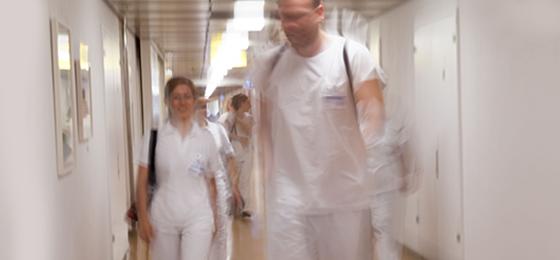05 Case management reduces the number of ED visits and promotes patients' quality of life in frequent users

Most emergency departments (ED) in Switzerland are overloaded. This is explained in part by a minority of patients making above-average use of EDs. Introducing a type of case management response may help address complex needs of this population.
Project description (completed research project)
First, the research team met key staff of all 13 public hospitals with adult ED the French-speaking part of Switzerland to provide information about the study and invite them to a workshop to learn more about case management. Second, the eight sites deciding to implement the case management introduced it to frequent users locally. Patients receiving the case management completed an assessment by phone with the research team to measure their trajectories over time. In addition, ED staff involved in the implementation completed questionnaires and qualitative interviews with the research team to evaluate the implementation process. The research team provided ongoing support and training during the implementation.
Background
Frequent users of EDs are often multiply affected by medical, psychological, substance use and social problems. At Lausanne University Hospital, they represent 4% of patients and generate 12% of visits. Research in academic setting shows that initiating a case management for these patients in ED can help reduce ED visits and increase quality of life of patients. However, less is known about how implementing this practice to diverse settings, such as community and non-academic services.
Aim
This study aimed to introduce a case management for frequent users of EDs in different settings in French-speaking part of Switzerland in both community and academic ED hospitals. The study focused on both the implementation process and clinical trajectories among patients receiving the case management. The aim was to gain insights into how disseminating this practice into broader practice in real-world settings. Doing so may help decrease ED visits and improve healthcare for these patients.
Results
Involved ED staff screened 32% of all frequent users visiting the ED sites during the study. When invited, 55% of patients accepted the case management (totally 79 patients). Patients receiving the case management showed improvement in their physical quality of life and reduced their number of ED visits over time. They reported that they appreciated the case management. According to them, the quality of the relationship with the case manager was the main ingredient to positive changes. That said, some patients regretted case manager’s lack of time. ED staff involved in the implementation commonly reported a real teamwork to build and sustain the case management. They also reported lack of resources on sites, making the case management implementation challenging.
Relevance / Application
Significance of the results for research and practice:
The findings revealed high levels of interest and needs regarding the implementation of case management in Switzerland. Findings indicated that case management implementation was feasible, although it should be conducted with the provision of sufficient resources to ease adoption and enable an effective implementation. Findings among patients receiving case management confirmed that it is a promising way to decrease ED visits and improve quality of life in these patients.
Original title
Implementing a case management intervention for frequent users of the emergency department: a multicenter study in Switzerland (I-CaM)
